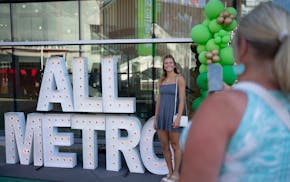There are codes of ethics for people who photograph wildlife. These codes and guidelines easily can be found on the Internet by Googling "wildlife photography ethics."
There is an ongoing clash locally involving behavior of some of the photographers taking photos of Snowy Owls. Not all photographers; let me be clear on that. There are many photographers who understand and follow appropriate behaviors. And there are those few who do not.
Perhaps you saw the WCCO-TV (Channel 4) story two nights ago on the 5 p.m local news. It illustrated and discussed the issue of baiting owls. Baiting involves either offering an owl a live mouse to lure the bird into close photo range, or casting fake mice toward the bird for the same purpose. These photographers have been particularly present at a site in Dakota County and at another location in the City of Ramsey, a northern suburb. There, you might see them in action between Armstrong Boulevard and Ferret Street along 147th Avenue. Watch for the ice-fishing rods and reels used for casting dummy mice.
The Ramsey owl, unfortunately cooperative, has been harassed in such a fashion for days, maybe weeks. The same photographers appear, with the same fake or store-bought mice. These men have been told by other photographers on site that such behavior is unethical, and bad for the bird. Those comments have been met with laughter and threats, or the people urging appropriate behavior are simply ignored.
It seems that none of the the photographers who need to bait owls to get the photos, photos they must desperately want, know anything about ethics. They seem ignorant of the numerous wildlife photography clubs and national associations that have very specific codes of conduct. These codes pointedly say baiting is unethical and should never be used to bring a bird close for photos.
So, our bozo photographers either are so uninformed about their own hobby that they don't know behavior codes exist, or they just don't care.
Our DNR and the U.S. Fish and Wildlife Service are looking into interpretation of existing laws concerning harassment of birds. The debate is whether baiting is or isn't harassment. Well, according to many wildlife photography groups baiting, illegal or not, is unethical. If you are a photographer who would represent your hobby in an acceptable way, baiting or use of lures to bring birds closer to the camera should not be done.
Here are excerpts from two photography codes:
Nature Photographers Network — "Do not entice a wild animals with food (baiting) in order to get the photo."
digicamhelp.com: "Never force an action." "Never feed or leave food (baiting) for wildlife."
North American Nature Photography Association: "… use good judgement: treat wildlife, plants, and places as if you were their guest."
And:
britishbirds.co.uk: "Be honest in declaring the circumstances in which a picture was taken." I include this because I wonder how many of our baiters are explaining their methods when showing off their photos. It's not hard to find these photos on Facebook and other photo-posting sites. If you go to look, pay attention to explanations, if any, on how the photo was obtained -- with true skill and care or faked with baiting. In my experience as a wildlife photographer the chances of a raptor attempting or making a capture or kill directly in front of you, at close range, is nearly impossible. Such photos are almost always faked. How can a person be proud of or brag about a faked photo?
Ottawa Field-Naturalists Bird Committee: "Keep a good distance away and do not linger."
International Association of Wildlife Photographers: "In the field, security and lack of disturbance of the animal must be put before all other things."
In conversation this week with another photographer at the Ramsey location I was told that a local nature photographers club met recently and discussed the ethics of baiting. I was told club members broke about 50/50 on whether or not baiting was acceptable. I hope that's not true. I hope someone misunderstood. I hope photo clubs here have clear ethical standards. I hope the clubs are not endorsing behavior that wildlife photographers world-wide find unacceptable.

What to know about the latest COVID variants, Minnesota testing, vaccines
Sign up for Star Tribune newsletters

126 birds on list 'lost to science'

